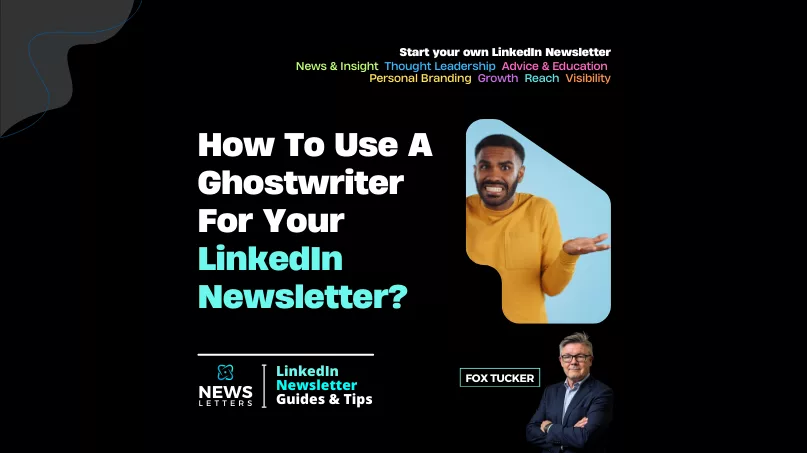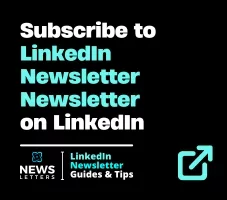Outsourcing the writing of your LinkedIn newsletter to a ghostwriter can save time and ensure consistency. Here’s how to make the most of this strategy.
Do explore What’s the Difference Between a Corporate and Personal LinkedIn Newsletter? 3rd parties can be given access to corporate LinkedIn Newsletters, but NOT personal LinkedIn Newsletters.
If you’re exploring the idea of using a ghostwriter for your personal LinkedIn Newsletter, be aware that you will be the one loading up and publishing the content provided to you.
1. Choose the Right Ghostwriter
Finding a ghostwriter who understands your industry, brand voice, and audience is crucial. Look for someone who has experience writing for your niche and can adapt to your tone and style.
Action Points:
- Review the ghostwriter’s portfolio to ensure they have experience in your industry.
- Set up an initial meeting to discuss your goals, tone, and content strategy.
- Ask for a short test piece to see if their writing aligns with your expectations.
2. Set Clear Expectations
A successful ghostwriting relationship relies on clear communication. Be specific about your goals, voice, and content preferences to avoid misunderstandings down the line.
Action Points:
- Provide detailed briefs for each newsletter edition, including key points and the tone you want.
- Set expectations for deadlines, revisions, and feedback cycles.
- Share examples of newsletters you admire to give the ghostwriter a better understanding of your style.
3. Stay Involved in the Process
While the ghostwriter will handle the bulk of the work, it’s important to stay involved to ensure the content reflects your brand and voice. Regular check-ins can help keep everything on track.
Action Points:
- Schedule regular check-ins to review drafts and provide feedback.
- Review all content before it’s published to ensure it aligns with your brand.
- Provide your ghostwriter with updates, personal anecdotes, or industry news they can incorporate into the content.
4. Maintain Authenticity
Even though you’re outsourcing the writing, it’s important to maintain the authenticity of your voice. Share personal stories or insights that the ghostwriter can weave into the newsletter, so it still feels like it’s coming from you.
Action Points:
- Provide your ghostwriter with personal insights, industry experiences, or anecdotes that will make the content feel more personal.
- Review the final draft to ensure it aligns with your voice and doesn’t feel too generic.
- Encourage the ghostwriter to mimic your conversational style.
5. Measure Success
Once the ghostwritten newsletters are published, keep an eye on how they perform. This will help you determine whether the collaboration is working and what can be improved.
Action Points:
- Track engagement metrics such as open rates, clicks, and shares.
- Collect feedback from your audience to assess how well the content is resonating.
- Adjust your approach based on performance data and audience feedback.





















